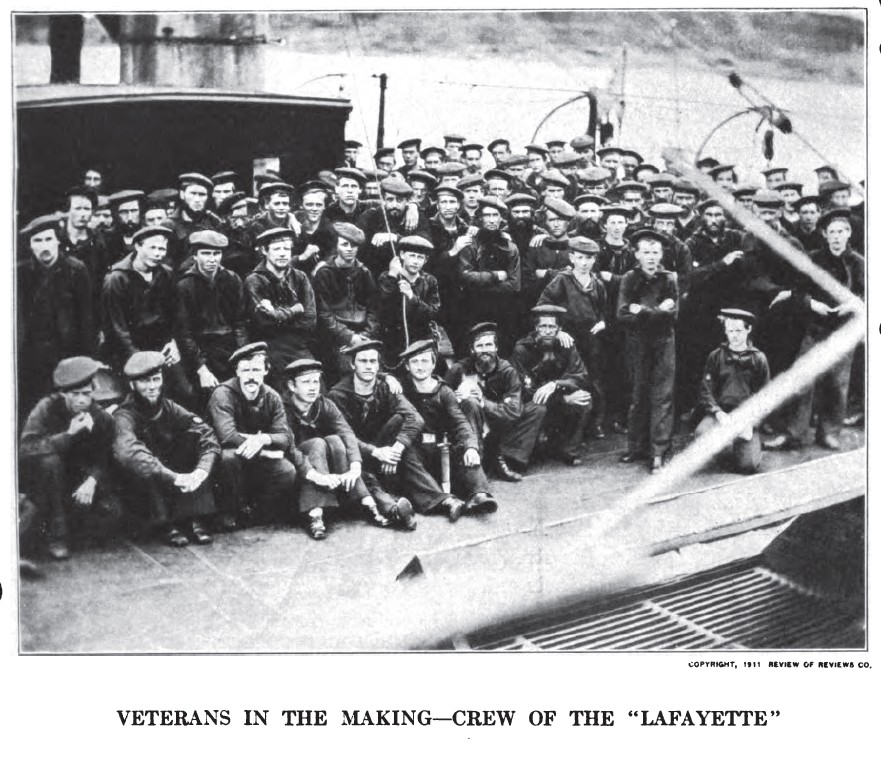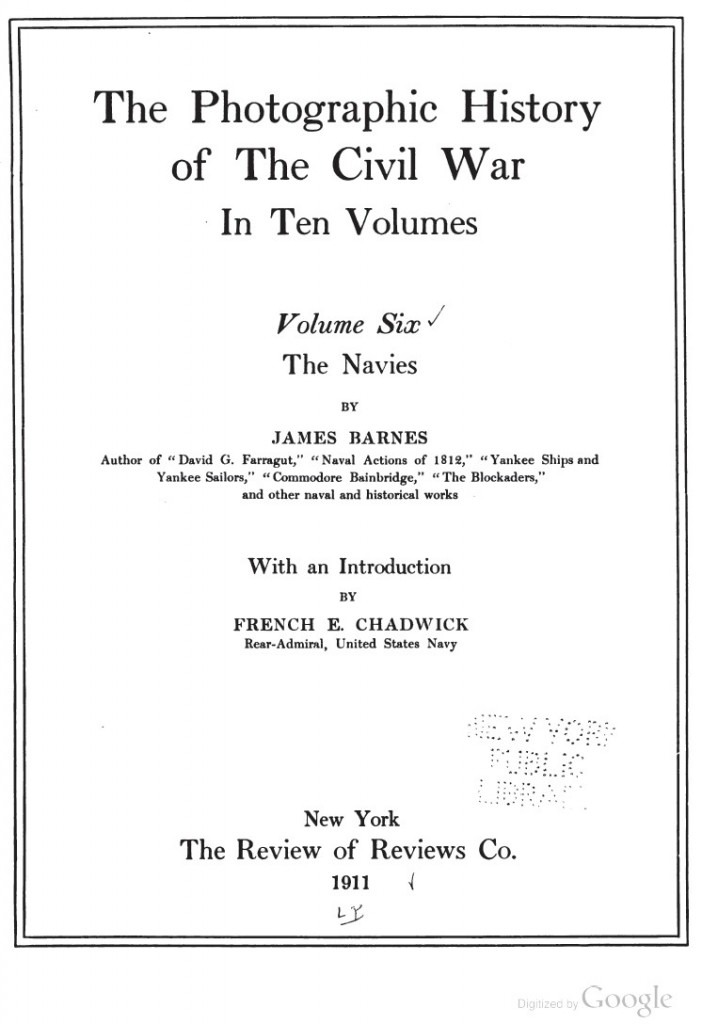The Navies
Posted By Norman Gasbarro on February 7, 2011
(Part 7 of 12). Contents of Volume VI of The Photographic History of the Civil War: The Decisive Battles.
The year 1911 was the 50th anniversary of the beginning of the Civil War. In a memorial to the war, a ten volume set of books was published entitled The Photographic History of the Civil War. This series attempted, through photographs, to do what no other books had previously done – to bring the war close and personal through previously unpublished and unavailable photographs. The series was edited by Francis Trevelyan Miller.
This post is part 7 of a 12 part series and will focus on the contents of Volume VI, The Navies.
Contents of Volume VI of The Photographic History of the Civil War.
Text by James Barnes (except as noted).
“The Federal Navy and the Blockade,” French E. Chadwick. “The Organization of the Federal Navy.” “The Organization of the Confederate Navy.” “First Expeditions of the Federal Navy.” “The Blockade.” “The Birth of the Ironclads.” “The Most Famous American Naval Battle.” “The Most Daring Feat.” “Fighting on the Mississippi.” “The Action with the Forts.” “Naval Actions Along the Shores.” “The Sea Life of ’61.” “The Confederate Cruisers and the Alabama.” “Naval Chronology, 1861-1865.”
In a previous post entitled “At Sea: Sailors, Marines, Merchant Seamen, Blockaders, Revenue Service” the attempts to compile a list of all the possible Lykens Valley area Civil War veterans with some sort of service “at sea” were discussed. The volume in this series is of great help to define the roles of each of the above-named types of service in the Civil War. Perhaps because of the “land-locked” nature of the geography of the Lykens Valley area, so few men from that area had service at sea. It is interesting though that Millersburg contributed several men to naval service (Isaac Miller, Thomas Norton & Dallas David Ditty), Millersburg being on the Susquehanna River, and the site of Millersburg Ferry – familiarity with water probably being the major reason for their choice. Two others, from townships near the river, Frederick Wise (Jackson Township) and Edward Lineman (Halifax Township), also appear on the naval list.
In addition to pictures of ships, many published for the first time, there are many pictures of seamen on ships. Although for the most part the seamen are not identified by name, the pictures nevertheless provide glimpses into what life must have been like for the men whose duty was performed on water during the Civil War. several examples are shown below:
The Value of Discipline – Practice on the “Mendota”
Though lamentably unprepared for war in ’61, the Federal Navy by 1864 set an example of constant arduous training and drill, even during lulls in the actual fighting sush as when this photograph was taken, on the James River in 1864.
On the “Freeborn” – Showing how Ward, the first Federal Commander was Lost
This photograph of 1861… is the only vestige of a visual record of… how [Commander James Harman] Ward… stood when he received his mortal wound…. The picture, taken on the deck of the little improvised gunboat “Freeborn,” the man sighting the gun has reverently donned the blouse and straw hat of Commander Ward to show how that brave officer stood when he received his mortal wound…. Commander Ward… was in the act of sighting a gun himself when he was suddenly wounded in the abdomen and soon expired.
 Veterans in the Making – Crew of the “Lafayette”
Veterans in the Making – Crew of the “Lafayette”
On the Mississippi [River] ironclad “Lafayette,” the photographer has arranged the crew so that a better idea of the faces of the men can be gathered. Many of them are seen to be foreigners, while of the native American boys and youths as usual predominate. There is none of the unmistakable look that characterized the crews of the gunboats and ships in Eastern waters…. Yet these men could fight as bravely and endure hardships as uncomplainingly as their salt-water comrades. Most of them were recruited from the river towns….
Men of the “Unadilla,” after Playing their Part in the Navy’s Crucial Test
The “Unadilla” was but one of the fifty vessels that had assembled in Hampton Roads by October 27th to join the largest fleet ever commanded by an officer of the American navy up to that time…. The “Unadilla” is described officially as a steam gunboat, but she was typical of the sort of hastily converted the vessels that made up the fleet – river steamers, ferryboats, tugs, almost anything that would turn a wheel or propeller…. It was a momentous trial of wooden ships against most formidable earthworks….
The challenge in using this volume is to relate the material in it to men who are part of this Civil War Research Project. However, knowing that each naval action was carefully coordinated with activities on land, it would not be too difficult to match specific ships that were parts of greater strategies where regiments of Pennsylvania soldiers also took part.
For a free download from Google Books, click here and select “PDF” in the upper right corner of the page. When the “PDF” file opens in your reader, save the file to disk. Use of the file is subject to restrictions that are spelled out on the first page of the PDF. Essentially, the restrictions specify that the digital book may be used for personal, non-profit use only and that the Google Books “watermark” should not be removed from the pages.
Tomorrow, part 8 of this series will examine Volume VII, Prisons and Hospitals.
 ;
;



Comments